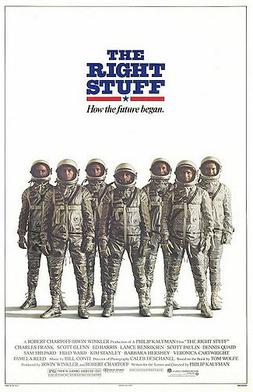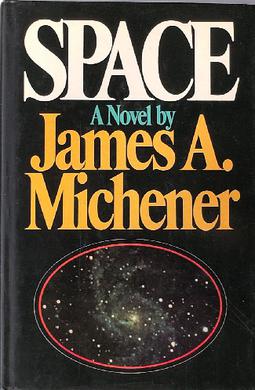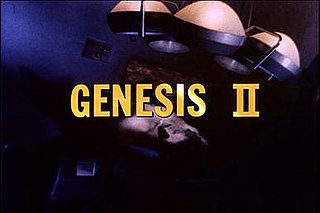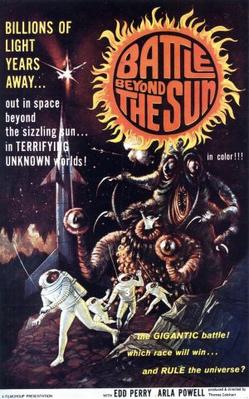
Eugene Wesley Roddenberry Sr. was an American television screenwriter and producer who created the science fiction franchise Star Trek. Born in El Paso, Texas, Roddenberry grew up in Los Angeles, where his father was a police officer. Roddenberry flew 89 combat missions in the Army Air Forces during World War II and worked as a commercial pilot after the war. Later, he joined the Los Angeles Police Department and began to write for television.

Human spaceflight is spaceflight with a crew or passengers aboard a spacecraft, often with the spacecraft being operated directly by the onboard human crew. Spacecraft can also be remotely operated from ground stations on Earth, or autonomously, without any direct human involvement. People trained for spaceflight are called astronauts, cosmonauts (Russian), or taikonauts (Chinese); and non-professionals are referred to as spaceflight participants or spacefarers.

Spock is a fictional character in the Star Trek media franchise. He first appeared in the original Star Trek series serving aboard the starship USS Enterprise as science officer and first officer and later as commanding officer of the vessel. Spock's mixed human–Vulcan heritage serves as an important plot element in many of the character's appearances. Along with Captain James T. Kirk and Dr. Leonard "Bones" McCoy, he is one of the three central characters in the original Star Trek series and its films. After retiring from active duty in Starfleet, Spock served as a Federation ambassador, and later became involved in the ill-fated attempt to save Romulus from a supernova, leading him to live out the rest of his life in a parallel universe.

Earth: Final Conflict is a science fiction television series based on ideas developed by Gene Roddenberry. The series was produced under the guidance of his widow, Majel Barrett-Roddenberry, who possessed notes kept by Roddenberry that would provide the conceptual basis for the series. It ran for five seasons between October 6, 1997, and May 20, 2002.

The Right Stuff is a 1983 American epic historical drama film written and directed by Philip Kaufman and based on the 1979 book of the same name by Tom Wolfe. The film follows the Navy, Marine, and Air Force test pilots who were involved in aeronautical research at Edwards Air Force Base, California, as well as the Mercury Seven, the seven military pilots who were selected to be the astronauts for Project Mercury, the first human spaceflight by the United States. The film stars Sam Shepard, Ed Harris, Scott Glenn, Fred Ward, Dennis Quaid, and Barbara Hershey; Levon Helm narrates and plays Air Force test pilot Jack Ridley.

Donald Kent "Deke" Slayton was an American Air Force pilot, aeronautical engineer, and test pilot who was selected as one of the original NASA Mercury Seven astronauts. He went on to become NASA's first Chief of the Astronaut Office and Director of Flight Crew Operations, responsible for NASA crew assignments.

Joseph Percival "Joe" Allen IV is an American former NASA astronaut. He logged more than 3,000 hours flying time in jet aircraft.

Space burial is the launching of human remains into space. Missions may go into orbit around the Earth or to extraterrestrial bodies such as the Moon, or farther into space.
The Ambassadors of Death is the third serial of the seventh season of the British science fiction television series Doctor Who, which was first broadcast in seven weekly parts on BBC1 from 21 March to 2 May 1970. Written by Trevor Ray, Terrance Dicks and Malcolm Hulke, the serial was directed by Michael Ferguson.

Space is a novel by James A. Michener published in 1982. It is a fictionalized history of the United States space program, with a particular emphasis on human spaceflight.

The Questor Tapes is a 1974 American made-for-television sci-fi drama film about an android with incomplete memory tapes who is searching for his creator and his purpose. Conceived by Gene Roddenberry, who is credited as executive consultant, the script is credited to Roddenberry and fellow Star Trek alumnus Gene L. Coon. The pilot was directed by Richard Colla.

Genesis II is a 1973 American made-for-television science fiction film created and produced by Gene Roddenberry and directed by John Llewellyn Moxey. The film, which opens with the line, "My name is Dylan Hunt. My story begins the day on which I died", is the story of a 20th-century man thrown forward in time, to a post-apocalyptic future, by an accident in suspended animation. The film stars Alex Cord, Mariette Hartley, Ted Cassidy, Percy Rodrigues, Harvey Jason, Titos Vandis, Bill Striglos, Lynne Marta, Harry Raybould, and Majel Barrett.

Planet Earth is a 1974 American made-for-television science fiction film that was created by Gene Roddenberry, written by Roddenberry and Juanita Bartlett. It first aired on April 23, 1974 on the ABC network, and stars John Saxon as Dylan Hunt. It was presented as a pilot for what was hoped to be a new weekly television series. The pilot focused on gender relations from an early 1970s perspective. Dylan Hunt, confronted with a post-apocalyptic matriarchal society, muses, "Women's lib? Or women's lib gone mad..." The film also stars Diana Muldaur, Ted Cassidy, Janet Margolin, Christopher Cary, Corrine Camacho, and Majel Barrett. Marc Daniels directed the film.

The science fiction multimedia franchise of Star Trek since its original debut in 1966 has been one of the most successful television series in science fiction television history and has been considered by many to have had a large influence in popular culture as a result.
"Specimen: Unknown" is an episode of the original The Outer Limits television show. It first aired on 24 February 1964, during the first season.

Battle Beyond the Sun is a 1962 science fiction film. It is an English-dubbed and re-edited American version of Nebo Zovyot, a 1959 Soviet science fiction film. Roger Corman acquired the Soviet film for US distribution and hired a young film-school student named Francis Ford Coppola to "Americanize" it.

Gaganyaan is an Indian crewed orbital spacecraft intended to be the formative spacecraft of the Indian Human Spaceflight Programme. The spacecraft is being designed to carry three people, and a planned upgraded version will be equipped with rendezvous and docking capabilities. In its maiden crewed mission, the Indian Space Research Organisation (ISRO)'s largely autonomous 5.3-metric ton capsule will orbit the Earth at 400 km altitude for up to seven days with a two- or three-person crew on board. The first crewed mission was originally planned to be launched on ISRO's HLVM3 rocket in December 2021. As of October 2023, it is expected to be launched by 2025.

Buck Rogers in the 25th Century is a 1979 American science fiction adventure film directed by Daniel Haller. Starring Gil Gerard in the title role and Erin Gray as Colonel Wilma Deering, it was produced by Glen A. Larson who co-wrote the screenplay with Leslie Stevens, based on the character Buck Rogers which was created by Philip Francis Nowlan in 1928. It was originally made as a television pilot, but Universal Pictures opted to release the movie theatrically several months before the subsequent television series aired.
Suspended animation in fiction refers to the temporary cessation of life processes experienced by fictional characters, followed by their subsequent revival. This process is commonly employed as a plot device in science fiction narratives. It is frequently utilized to transport a character from the past to the future or to facilitate interstellar space travel, which necessitates an extended journey for months or years. In addition to accomplishing the character's primary objective in the future, they often encounter the unfamiliarity of a new world, which may bear only faint resemblance to their previous surroundings. On occasion, a character is portrayed as possessing skills or abilities that have become lost to society during their period of suspension, enabling them to assume a heroic role in their new temporal setting.

Sian Hayley "Leo" Proctor is an American commercial astronaut, geology professor, artist, author, and science communicator. She became the first female commercial spaceship pilot on the all-civilian Inspiration4 orbital spaceflight, 15 September 2021. As pilot of the Inspiration4's SpaceX Crew Dragon space capsule, Proctor became the first African-American woman to pilot a spacecraft. She was also the education outreach officer for the first Hawaii Space Exploration Analog and Simulation (HI-SEAS) Mission.

















